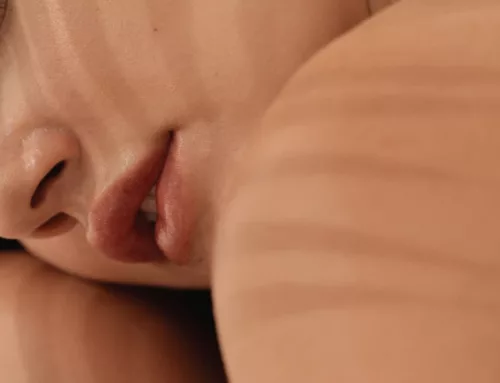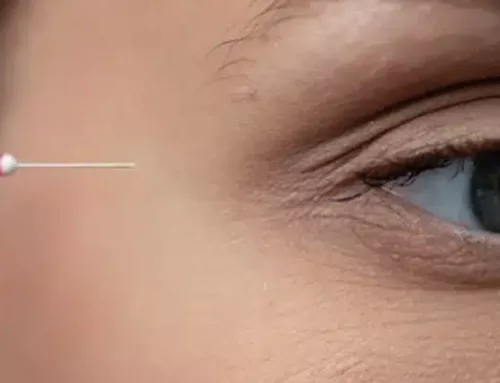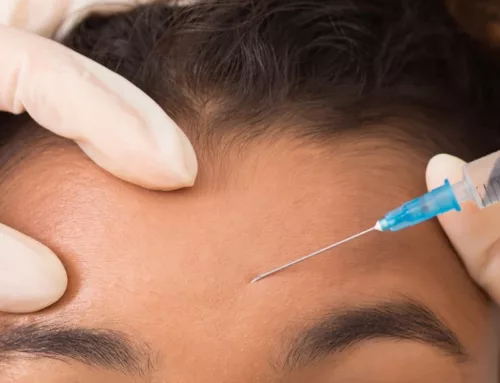The Basics of Botox
Botox has been a popular anti-aging treatment since the nineties when it was commonly used amongst the famous. Since then, Botox has grown in popularity, and today more people are turning to this treatment to help them maintain a youthful appearance.
But what even is Botox, and how does it affect the skin on a scientific level?
On The Skin Report podcast, Dr. Simran Sethi, an Internal Medicine doctor and the Founder and Medical Director of RenewMD medical spas, sheds light on the science-backed facts surrounding skin treatments. This week, she talks Botox, neurotoxins, and everything in between! Read on to learn about the details surrounding these powerful components and what makes Botox so effective as an anti-aging treatment.
What is Botox, Anyway?
Botox is the brand name of a product called Botulinum toxin. Botox is derived from a bacteria and acts as a neurotoxin, as it stops the signals between our nerve cells and muscle. Botox is injected into muscles to prevent muscle contraction.
When injected into certain areas of the face, it will prevent the muscles from moving and causing wrinkles to form on the skin. Even when we are not actively emoting, sometimes our muscles move as a reflex: frowning at a computer screen, raising eyebrows at a text, etc. This is commonly known as “muscle memory.”
When administered correctly by an experienced injector, Botox can be an effective part of a wrinkle-prevention strategy. However, its effects are temporary, and patients will need to repeat treatments until their muscles “forget” their “memory” and stop moving.
Why Botox is Used in Anti-Aging
Botox addresses a primary cause of wrinkle formation – facial movements.
We constantly move our faces to talk, eat, and show emotion throughout each day. However, these natural facial movements can cause our face to wrinkle, especially in places that move more when we talk and emote. As such, wrinkles commonly form between our brows, on our foreheads, and around our eyes.
Skin affected by UV and pollution exposure is more prone to developing wrinkles through facial movement, as these elements break down collagen and elastin proteins in the deeper skin layer. But by injecting Botox into specific facial muscles, we can arrest their movement to prevent them from causing skin wrinkling while maintaining a natural appearance.
Choosing a Botulinum Toxin
If you’re still unsure if Botox is right for you, you might want to consider its competitors instead. Botox is one of three different Botulinum toxin brands commonly used for cosmetic treatments. While these brands accomplish similar results, they vary slightly in their scientific makeup and in the different protein structures surrounding them.
Botox
Botox, also called Onabotulinum Toxin A, was the first Botulinum toxin studied and developed for cosmetic use. This is why it has the largest market share today and remains a popular go-to Botulinum toxin brand. In addition, its strong clinical history and long-standing use in cosmetic treatments also make it a highly trusted element.
Xeomin
Xeomin, is a botulinum toxin that differs from Botox as it is wrapped in a very ‘thin’ protein structure. It is an almost ‘naked’ neurotoxin with barely any proteins around it. Xeomin can be a good option for patients who experience an allergic reaction to the robust protein capsule surrounding the neurotoxin in Botox.
Dysport
Dysport was introduced to the market years after Botox but before Xeomin. It is unique compared to these other neurotoxins as it has a different protein envelope.
A Short-Lived Fix with Long-Term Effects
Botox only temporarily arrests muscles, so results usually only last around 3-4 months. This can discourage some people from trying Botox. However, consistent use can have long-term impacts on our facial muscles.
Muscle memory is developed when faces do repeated movements, causing the facial muscle to continue contracting even when these movements are not performed deliberately. But getting Botox treatments continuously in the correct intervals can help your muscles lose their muscle memory and ‘forget’ to contract involuntarily. Repeated and consistent Botox use can lessen these unintended facial movements, which means you will require less Botox to achieve the desired results!
The Best Injection Spots for Your Botox
The most popular facial areas to inject Botox are within the underlying muscles where wrinkles most commonly form. The top three facial areas most frequently treated with Botox are between the eyebrows, the forehead, and the side of our eyes. However, the best treatment spot and dosage for a patient will also depend on their facial anatomy and goals.
The Glabella
The first and most common area for Botox is the area between the eyebrows, called the Glabella. It usually requires about 20 units of Botox and will address the two vertical lines that form between the eyebrows. These lines, sometimes called frown lines or 11’s, can get very deep if left untreated.
The Forehead
The forehead muscles, also known as the frontalis, are two thin, broad muscles covering our entire forehead. They are responsible for the formation of horizontal lines across the forehead. Most patients usually need about 16 to 20 units over several injections to achieve natural results in this area, but their exact dose can vary.
The Sides of Our Eyes
The wrinkles that form at the sides of our eyes, sometimes called crow’s feet, can be safely treated with Botox. If applied by an experienced injector, Botox can be administered in a way that will still provide you with a natural appearance when you smile. This area can require anywhere from 9 to 12 units of Botox per eye.
Botox can be an effective cosmetic treatment for anti-aging if administered by a skilled and experienced injector. However, when it comes to facial treatments involving neurotoxins, quality is always more important than quantity. Therefore, be careful to only seek services from reputable providers because if a clinic offers Botox for a very low price, this deal might be too good to be true! Instead, be safe and get treatments from reputable places with qualified injectors, and you will experience the positive benefits of Botox.
To learn more about the Botox treatments, dosages, and advice for incorporating neurotoxins into an anti-aging regime, tune into season 1, episode 26 of the Skin Report podcast!







